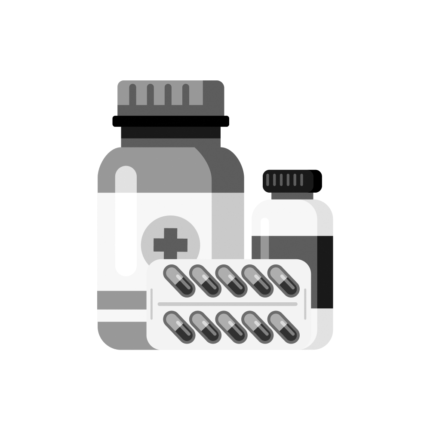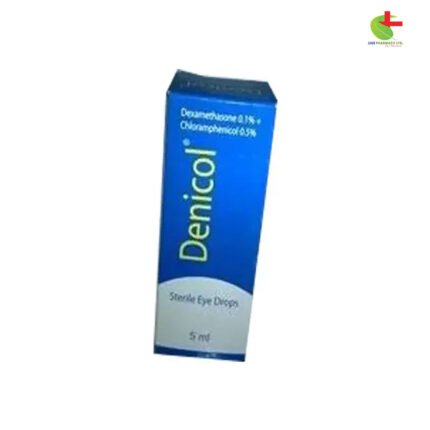Cefim-3 PD
100.00৳ Bottle (21ml)
- Cefim-3 is a broad-spectrum third-generation cephalosporin antibiotic effective against both Gram-positive and Gram-negative bacteria.
- It is indicated for the treatment of various infections, including URTI, LRTI, and UTI, caused by susceptible microorganisms.
- Cefim-3 is highly stable against beta-lactamase enzymes, ensuring effectiveness even against resistant strains.
- The drug is suitable for both adults and children, with dosage adjustments recommended for those with renal impairment.
 Brand
Brand
|
ACI Limited |
|---|---|
 Generics
Generics
|
Cefixime Trihydrate |
 Type
Type
|
Pediatric Drops |
Indications:
Cefim-3 is a potent orally administered cephalosporin antibiotic with broad-spectrum bactericidal activity against a wide range of Gram-positive and Gram-negative bacteria. It is specifically indicated for the treatment of various acute infections caused by susceptible microorganisms.
- Upper Respiratory Tract Infections (URTI): This includes conditions like otitis media and other upper respiratory infections where the causative organism may be resistant to commonly used antibiotics or where treatment failure poses significant health risks.
- Lower Respiratory Tract Infections: Such as bronchitis.
- Urinary Tract Infections (UTIs): Includes cystitis, cystourethritis, and pyelonephritis.
Cefim-3 has proven effective against pathogens like Streptococcus pneumoniae, Escherichia coli, Klebsiella species, Haemophilus influenzae, and more, including beta-lactamase-producing strains. It remains stable and effective even in the presence of beta-lactamase enzymes.
Use as per the advice of a registered medical professional.
Pharmacology:
Cefim-3 contains Cefixime, a third-generation semisynthetic cephalosporin that is bactericidal, targeting a wide variety of Gram-positive and Gram-negative bacteria. By inhibiting bacterial cell wall synthesis, it effectively kills bacteria. Cefim-3 is highly resistant to beta-lactamase, ensuring efficacy against organisms resistant to penicillins and some cephalosporins.
The absorption rate of Cefixime is approximately 40-50%, irrespective of food intake.
Dosage & Administration:
- Adults & Children Over 10 Years: 200-400 mg per day, depending on the infection’s severity, either as a single dose or divided into two doses.
- Elderly: Same dose as adults, but renal function should be evaluated, and dosage adjusted in cases of severe renal impairment.
- Children:
- 6 months to 1 year: 3.75 ml daily
- 1-4 years: 5 ml daily
- 5-10 years: 10 ml daily
- In cases of typhoid, 5 mg/kg twice daily for 10-14 days.
- For children over 10 years or those weighing over 50 kg: Adult dosage (200-400 mg daily).
Renal Impairment:
For those with creatinine clearance <20 ml/min, limit the dose to 200 mg once daily. In chronic dialysis patients, follow the same guideline.
Use as per the advice of a registered medical professional.
Drug Interactions:
Similar to other cephalosporins, caution should be observed when Cefim-3 is administered alongside anticoagulant therapy, as it may increase prothrombin times.
Contraindications:
Avoid use in patients with known hypersensitivity to cephalosporin antibiotics.
Side Effects:
Cefim-3 is generally well-tolerated. Most side effects are mild and resolve once treatment is stopped. Common side effects include:
- Gastrointestinal issues: Diarrhea (more common at higher doses), nausea, abdominal pain, dyspepsia, and flatulence.
- CNS Effects: Headaches and dizziness.
- Hypersensitivity Reactions: Skin rashes, itching, urticaria, drug fever, and joint pain.
- Hematological Effects: Thrombocytopenia, leukopenia, and eosinophilia, though these are rare and reversible.
Mild changes in liver and kidney function tests may also occur.
Pregnancy & Lactation:
Cefim-3 should only be used during pregnancy if absolutely necessary, as there are no well-controlled studies in pregnant women. It’s unknown whether Cefixime is excreted in breast milk, so caution is advised when administering this drug to nursing mothers.
Precautions & Warnings:
- Hypersensitivity: Use with caution in patients with a history of drug allergies, especially those sensitive to penicillin, as there may be cross-reactivity.
- Renal Impairment: Use with caution in patients with impaired renal function.
- Clostridium Difficile: Broad-spectrum antibiotics like Cefim-3 can disrupt the normal colon flora, potentially allowing Clostridium difficile overgrowth and causing antibiotic-associated diarrhea.
Overdose Effects:
In case of overdose, gastric lavage may be considered, as there is no specific antidote. Cefim-3 is minimally removed by hemodialysis or peritoneal dialysis. No significant adverse effects have been noted in healthy volunteers receiving doses up to 2 g.
Therapeutic Class:
Third-Generation Cephalosporins
Storage Instructions:
Store below 30°C, in a dry place, away from light and moisture. Keep out of reach of children.













Reviews
There are no reviews yet.